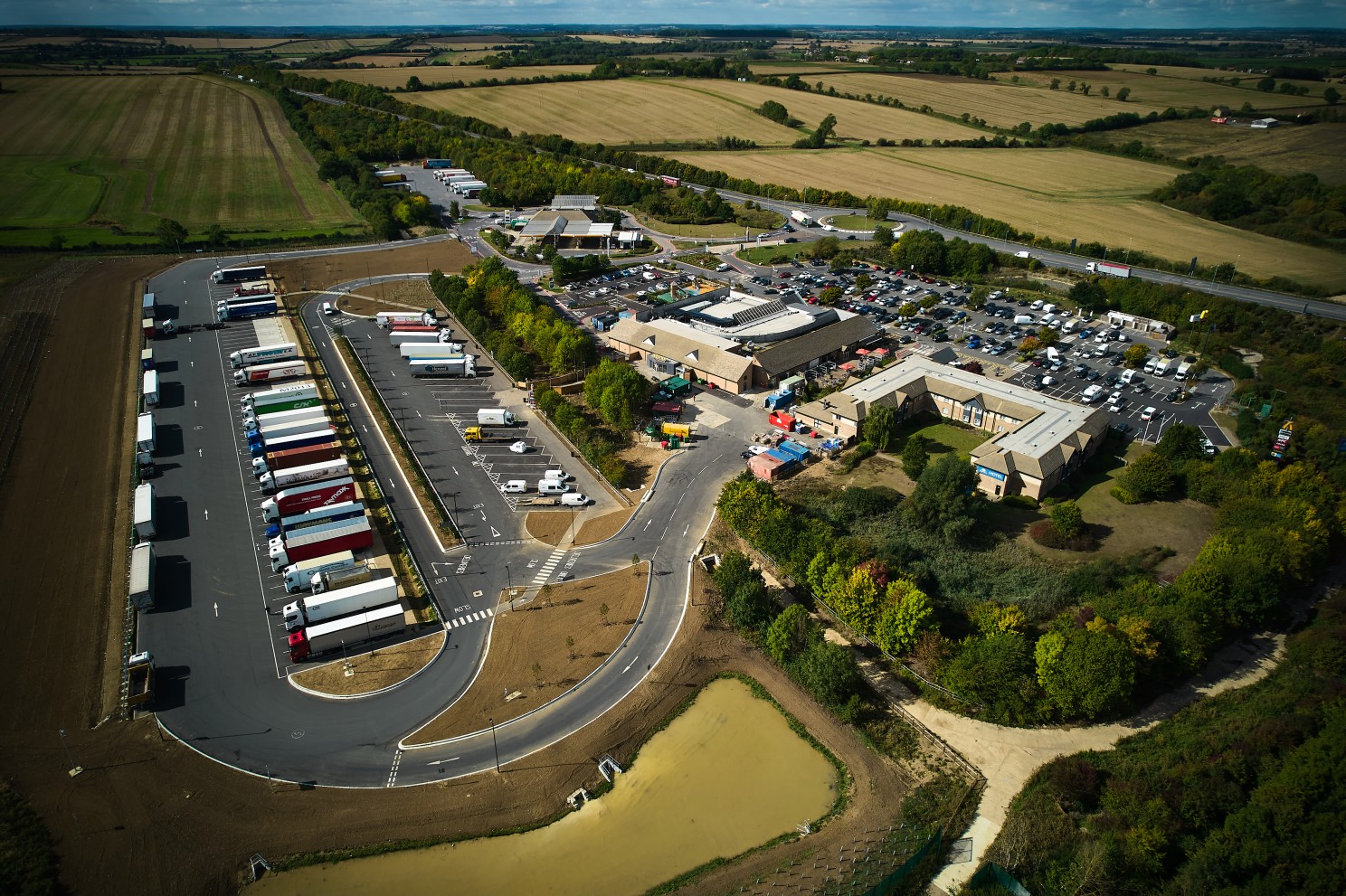
Josh Cousens
A strategic partnership: SNAP and Extra's approach to truck parking
Created: 01/08/2024
•
Updated: 13/08/2024
Director Ross Mendenhall explains how SNAP has helped Extra Motorway Service Area (MSA) increase revenue growth across their network by up to 8% annually since we started working together in 2011.
"A key benefit for us is that the SNAP customer base is constantly expanding, allowing us to reach an extra 30,000 potential customers yearly," says Ross Mendenhall, who uses SNAP to maximise Extra's truck parking business.
Ross explains his role at Extra: "I oversee our network of eight MSAs across England, ensuring we have the best working environment and processes, allowing us to deliver maximum customer satisfaction, and working in conjunction with our CEO to ensure we focus on our growth ambitions.
"I also work closely with our suppliers and tenant brands to ensure we provide the best possible experience for all who visit our MSAs."
Extra Motorway Service Areas
After opening its first site in Cambridge in 2000, Extra is now one of the UK’s largest motorway service operators. In the most recent Transport Focus Motorway Service Users survey, Extra was voted the number one operator for customer satisfaction in the UK.
Ross says, "Central to our ethos as a business is our commitment to ‘going the extra mile’ to deliver great experiences for all our visitors.
"In particular, we pride ourselves on offering a large range of some of the UK’s favourite food and beverage brands, picturesque outdoor spaces complete with dog walking areas and children’s play areas, as well as safe, clean and high-quality facilities for all to enjoy."
In 2023, there were 260,066 SNAP parking sessions in Extra Motorway Service Areas.

Enter SNAP
Having begun working with SNAP in 2011, Ross explains how the partnership has helped Extra grow its truck parking service. "SNAP helps us communicate our key services to HGV drivers and fleets, providing visibility of our parking, fuel and washing capabilities.
"We are committed to boosting the satisfaction rate of the HGV drivers that stop with us and being part of the SNAP network enables us to do just this. Through the app, we can grow our partnerships and organic sales by giving customers an efficient tool to learn more about our facilities, including how we can make their stay enjoyable, relaxing and secure."
What was the setup process like?
We wanted to find out if there were any complications in the early stages of the relationship.
Ross says: "It was very straightforward. The SNAP team were on hand to answer any questions we might have, and even after set-up was complete, they were happy to listen to our feedback about how the system might be further improved to better meet our needs."
Revenue growth
We asked Ross if SNAP has helped Extra to increase their revenue:
"Our partnership with SNAP has helped us steadily increase our revenue growth, which has increased YoY by 8%, with transaction growth increasing by 2%.
"Our services at Cambridge and Peterborough have seen the biggest improvement YoY at 11% and 12%. Furthermore, our services at Peterborough, Leeds, and Cambridge are all now at 100%+ occupancy."

SNAP Access & Security
After working together successfully for several years, Extra asked us in 2018 if we could help enhance their security facilities.
"We have furthered our partnership with SNAP over the years, having invested in CCTV and ANPR technology to ensure maximum safety.
"The installation of security technologies across all eight of our sites has helped us to protect our revenue, ensuring that every vehicle is paying for the correct duration of its stay.
"The impact of working with SNAP Access & Security was almost immediate – with a recorded increase in revenue generated from parking of around 20% since going live.
"Additionally, with security being one of the priorities for lorry drivers when stopping for a long period, we’re pleased to help make their stay more enjoyable by reassuring them that we have comprehensive measures to help minimise the risk of theft.
"Having access to SNAP’s business intelligence dashboards also means we can monitor data in real-time, allowing us to provide the best possible user experience.", says Ross.
The best bit
To conclude the interview, we wanted to ask Ross what he thought was the best thing about working with SNAP:
"A key success for us is the impact on staff efficiency. The introduction of the ANPR system, combined with the payment terminals allows drivers a self-service option, which means that staff can instead focus on other key tasks such as cleaning, maintenance and customer service.
"The flexibility that the payment terminals offer is also a big draw: drivers can use the payment terminals in 15 languages, improving the customer experience and reducing language barrier problems."
To find out more about the Extra service partners on the SNAP network, head to the SNAP Map today. If you offer truck parking facilities and want to join the SNAP network, find out more here.



